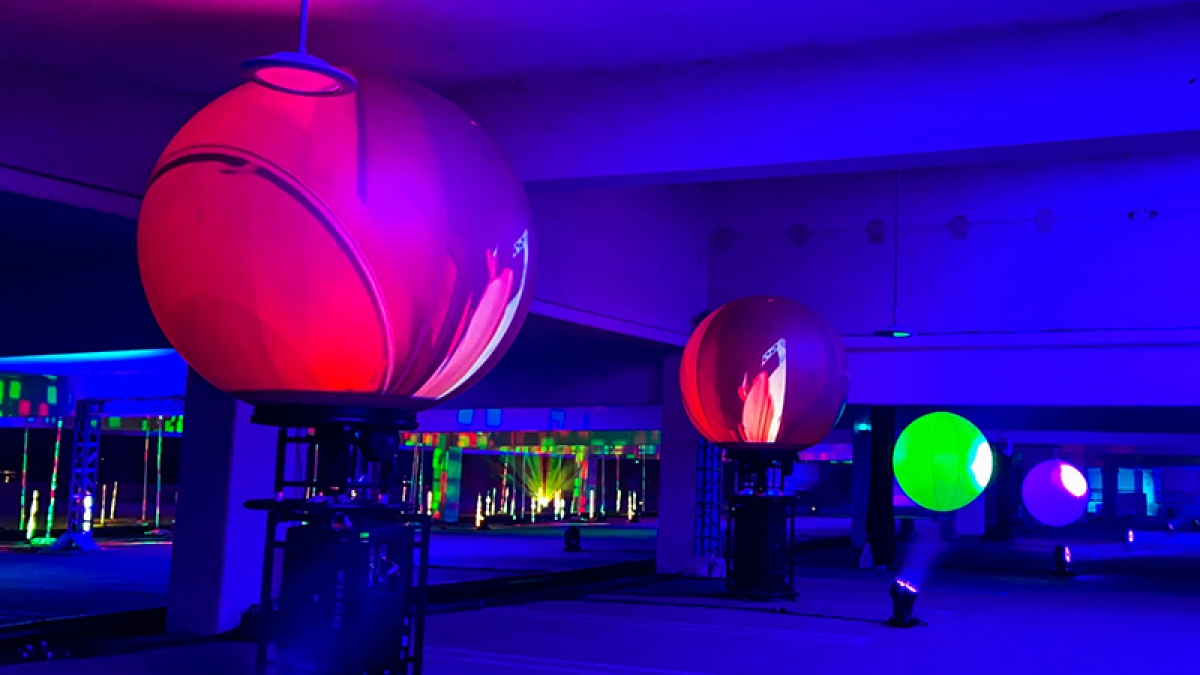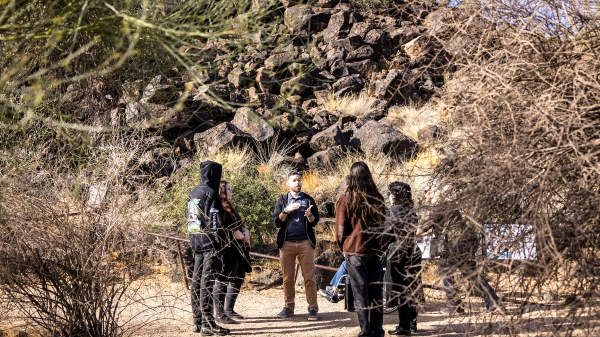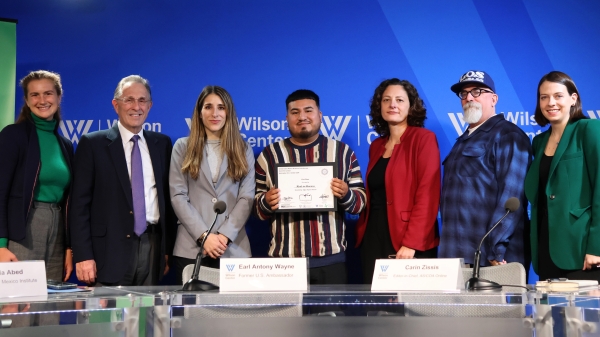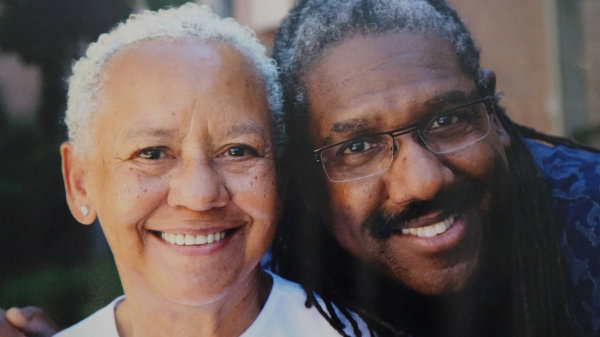Outdoor art installation provided ASU students with invaluable industry experience

Art installation in DesignSpace.
Arizona State University’s outdoor installation DesignSpace provided more than 100 ASU students, including 21 students from the School of Music, Dance and Theatre in the Herberger Institute for Design and the Arts, with a rare opportunity to learn firsthand from industry professionals. Undergraduate and graduate students gained hands-on experience working with light installation, graphic design and architecture designed specifically for COVID-19 restrictions.
“Providing opportunities for students to work with industry professionals was one of three primary motivations for the project,” said Jacob Pinholster, associate dean in the Herberger Institute for Design and the Arts and associate professor in the School of Music, Dance and Theatre. “The second was to provide arts opportunities to the public, which had gone over a year without much in the way of meaningful live arts experiences. The third was to put entertainment industry workers back to work after a year of almost no work.”
Referred to as “a drive-thru sensory art experience,” a “mile-long drive-thru art museum” and “bringing space into the space,” the installation was a collaborative effort between Pinholster; John Featherstone, co-director of Chicago-based lighting design company Lightswitch; Colleen Jennings-Roggensack, executive director of ASU Gammage; Phoenix live-event specialists Video West; and Oakland structural artists HYBYCOZO.
Audio, video and lighting specialists Video West provided the majority of the equipment support, Pinholster said, and the students helped design, install, program and operate the installation, which ran from April 9–25 at Packard Stadium on the Tempe campus.
Pinholster said that, to his knowledge, the unique collaboration was the largest scale project of its type, providing students the opportunity to work with professionals in the field. Eleven student artists and 10 student designers and technicians from the School of Music, Dance and Theatre participated in the project, along with three theater alumni affiliated with Lightswitch.
In addition to the School of Music, Dance and Theatre students, Herberger Institute students from the School of Art; the School of Arts, Media and Engineering; and The Sidney Poitier New American Film School also participated.
The DesignSpace team’s request for proposals was distributed to students though the Herberger Institute faculty. The proposal was challenging and technically complex and required a time commitment during a busy time of year for students.
Fernanda Navarro, assistant professor of composition in the School of Music, Dance and Theatre, asked students from two of her graduate level classes — "Collaborative Projects: Multimedia Installations" and "Music and Movement" — to submit their final projects as proposals.
“One of my goals was to promote an interdisciplinary environment and stimulate close collaborations between students from diverse areas, such as music, dance and interdisciplinary digital media," Navarro said.
The “Bootes Constellation Sonification” from her "Collaborative Projects: Multimedia Installations" class was the brainchild of Anastacia Meconiates, (MM in music composition: interdisciplinary digital media), and also involved Elora Mastison (MFA in theatre: interdisciplinary digital media), Nikhita Sheller (MA in musicology), Wyatt Dittmar (MA in musicology) and Ziyu Wang (DMA in music composition). Inspired by one of the largest constellations visible in the Phoenix sky in spring, the team created a visual representation of the constellation with embedded lighting and music.
“We created our ‘Sonifying the Stars’ project to encourage people who saw it to reflect on the intangible things humanity has accidentally destroyed, as well as encourage viewers to go to a deserted area and attempt to locate the constellation themselves,” Meconiates said. “I've never done any sort of multimedia installation before so being the team lead and project designer had a big learning curve. This project really taught me how to work in a group to a degree that a traditional group project cannot.”
The "Music and Movement" class project "Dancing with Augmented Reality" was created by students Kathy Luo (MFA in dance and dance teaching artist Praxis certificate), Laura Brackney (DMA in music composition) and Leia Wasbotten (DMA in voice performance) as an interdisciplinary collaboration.
“I wanted to portray the infinite galaxy as the inspiration to collaborate on this piece,” said Luo, who conceived the idea. “We wanted to relate the human inner world to the outside world, the individual psychology and universe, to showcase how important space is to each human being, particularly when we were restricted to stay in our own place because of the global pandemic.”
This was Luo’s first time working on an installation project and incorporating lighting design and digital features into her work as a choreographer.
“It's very important for me to expand my knowledge from a different angle and utilize it to improve my creative skills,” Luo said. “My advice to other students is to be confident and trust themselves with the ability to do new things and take advantage of the opportunity to step out of one’s own professional field to connect with the different artists.”
“It was really exciting to work with artists from different backgrounds,” Brackney said. “Our piece changed a lot over the course of the project after meeting with the Lightswitch designers, but we all contributed ideas about the concept and aesthetics of the piece. My advice to others when you are collaborating on a project is to be flexible and communicate.”
Pinholster said the project gave students access to working with and designing with millions of dollars of equipment provided for the students’ use gratis, along with professional mentors and support for their use, that are almost never accessible to students at any university.
“The production timeline and processes were a different model from the usual academic showcase and repertory production models that our programs usually focus on,” Pinholster said. “Professional, nontheatrical live event production and entertainment design are huge fields with lots of opportunity that most students do not get to experience in college at anything like this scale.”
More Arts, humanities and education

Petroglyph preserve celebrates 30th anniversary with ancient, modern tales
The Deer Valley Petroglyph Preserve provides a beautiful walk through a pristine desert where chuckwalla lizards are as plentiful…

Kaleidoscope short film contest inspires powerful binational filmmaking in its second year
“We come to this country not to steal anybody’s jobs but to take advantage of the opportunities that the rest ignore. We’ve been…

ASU's Neal Lester reflects on life, death of poet Nikki Giovanni
When Neal Lester heard on Monday that poet and activist Nikki Giovanni had died, the news hit hard.Lester, the founding director…